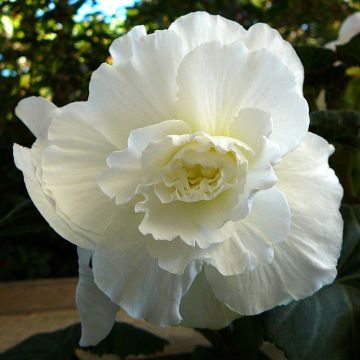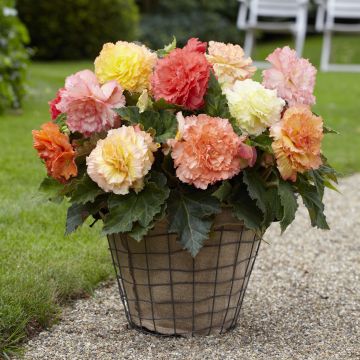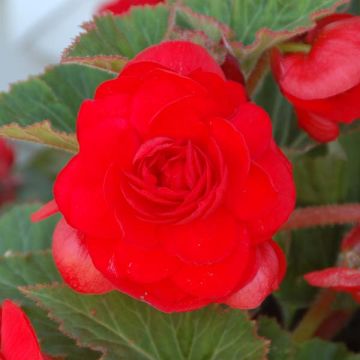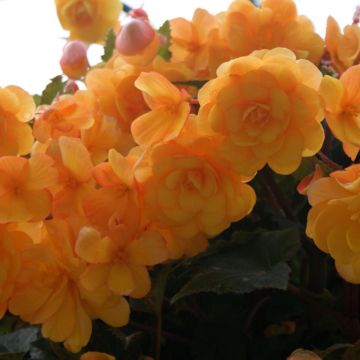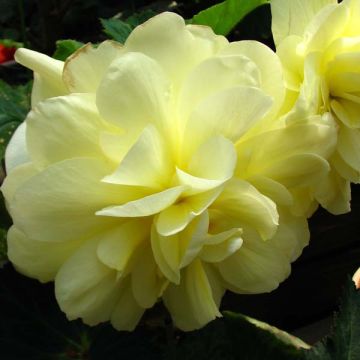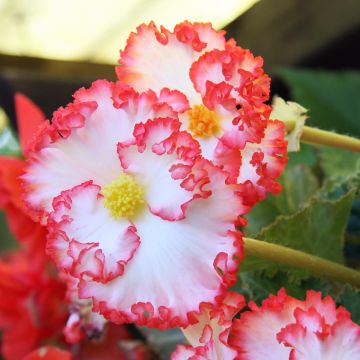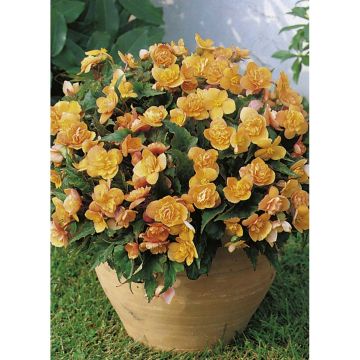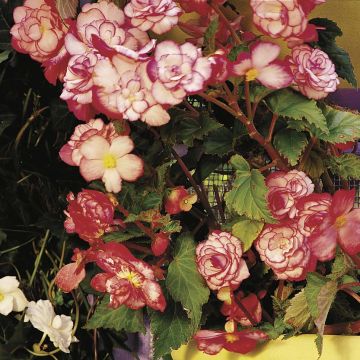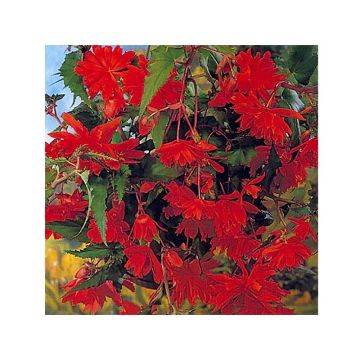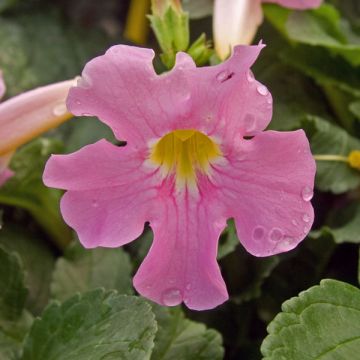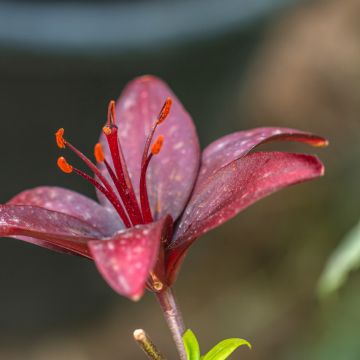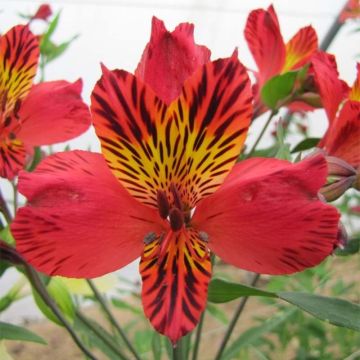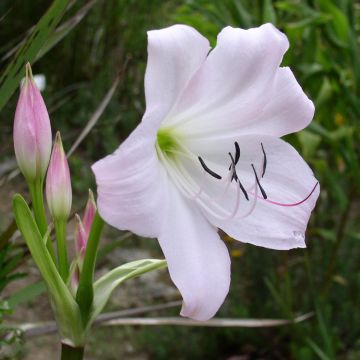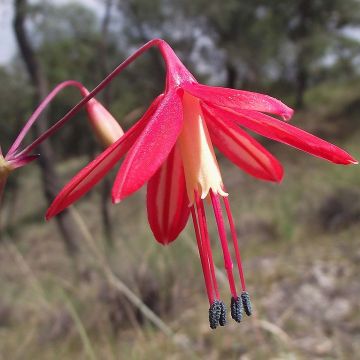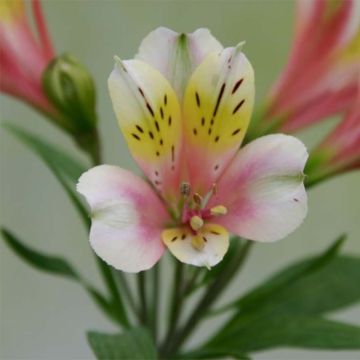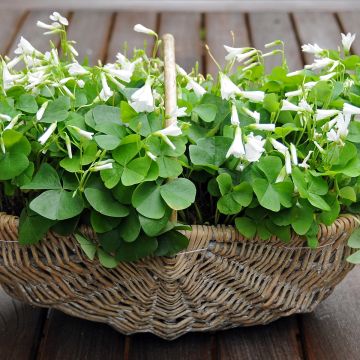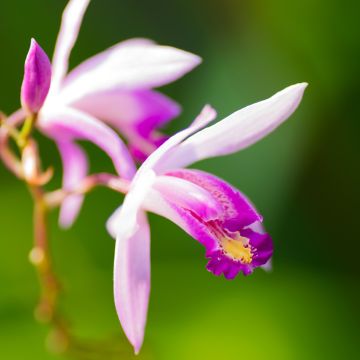Shipping country and language
Your country of residence may be:
Your country of residence is:
For a better user experience on our website, you can select:
Your shipping country:
Andorra
Austria
Belgium
Bulgaria
Canada
Chile
Croatia
Cyprus
Czechia
Denmark
Estonia
Finland
France
Germany
Greece
Hungary
Iceland
Ireland
Italy
Latvia
Lithuania
Luxembourg
Malta
Monaco
Netherlands
Poland
Portugal
Romania
Slovakia
Slovenia
Spain
Sweden
Switzerland
United Kingdom
We only deliver seed and bulb products to your country. If you add other products to your basket, they cannot be shipped.
Language:
French
German
Spanish
English
My Account
Hello
My wish lists
Plantfit
Log in / Register
Existing customer?
New customer?
Create an account to track your orders, access our customer service and, if you wish, make the most of our upcoming offers.


Red Begonia pendula Tuberhybrida
Red Begonia pendula Tuberhybrida
Begonia pendula (Tuberhybrida) Rouge
Hanging Begonia, Trailing Begonia
Order in the next for dispatch today!
Dispatch by letter from €3.90.
Delivery charge from €5.90 Oversize package delivery charge from €6.90.
More information
This item is not available in your country.
Schedule delivery date,
and select date in basket
This plant carries a 6 months recovery warranty
More information
We guarantee the quality of our plants for a full growing cycle, and will replace at our expense any plant that fails to recover under normal climatic and planting conditions.
From €5.90 for pickup delivery and €6.90 for home delivery
Express home delivery from €8.90.
Does this plant fit my garden?
Set up your Plantfit profile →
Description
Begonia pendula Red is a variety of tuberous begonia with a gracefully trailing habit and a very long flowering period of vibrant red. Its flexible stems are adorned with a multitude of small, single or double flowers, which are beautifully showcased against the dark green foliage. They cascade from hanging baskets and fill planters, bringing life to all semi-shaded areas of the terrace. This variety also stands out when planted in carefully arranged groups in a flower bed. Continuous flowering from June to October.
The Begonia pendula Red belongs to the Begoniaceae family and is part of the tuberous hybrid begonias, whose parents originate mainly from the Andean tropical forests. It is a trailing cultivar that reaches approximately 25-30cm (10-12in) in height when fully grown. Its deciduous foliage is composed of glossy, alternate leaves with finely serrated edges, dark green in colour and marked with prominent veins. The leaf blades are always asymmetrical, and the petioles have stipules at their base. The stems of this begonia are thick, fleshy, and brittle. Its male flowers are simple, cup-shaped with 4 petals, while the female flowers are fully double, measuring 3-4cm (1-2in) wide, with crepe-like, pleated petals in a pure red colour. They hang from long reddish petioles that emerge from the leaf axils. After flowering, which lasts from June to October without interruption, the plant enters a period of dormancy. The tubers will be cultivated like those of Dahlias.
Begonias are unrivalled for bringing colour to shaded areas. They also thrive in carefully arranged flower beds, alongside lighter flowers such as lobelias or forget-me-nots, whether cultivated in pots on the terrace or in hanging baskets. This pendula variety will be perfectly complemented by the silver foliage of Dichondra 'Silver Falls' and the tiny white flowers of 'Diamond Frost' euphorbia, in large pots in the winter garden or conservatory. Lastly, it is worth noting that there are hardy begonias, such as Begonia grandis.
Red Begonia pendula Tuberhybrida in pictures


Plant habit
Flowering
Foliage
Botanical data
Begonia
pendula (Tuberhybrida)
Rouge
Begoniaceae
Hanging Begonia, Trailing Begonia
Cultivar or hybrid
Other Begonias
Planting and care
Plant your pendulous begonias in a shaded or slightly sunny area, in light and moist soil rich in humus. Begonias are sensitive to heavy soils, so lighten them if necessary with sand. Plant them after the last frost, one per pot about twenty centimetres apart, or spaced 25cm (10in) apart in open ground. Plant the hollow begonia with the green side up, and cover with 5cm (2in) of soil. Like dahlias, you can speed up their growth cycle by planting them as early as February, in a pot, kept sheltered, and taking them out in May. Water regularly. Apply begonia fertilizer at planting, then twice a month during the season. Remove faded flowers. Dig up the bulbs before the first frost, and store them in a bit of turf, in a dry and cool place, during winter.
Tip: to obtain larger flowers in camellia or rose-flowered cultivars, you can remove the buds of the small female flowers located on either side of the large and very double male flower.
Planting period
Intended location
Care
This item has not been reviewed yet - be the first to leave a review about it.
Bulbs to grow in pots
Haven't found what you were looking for?
Hardiness is the lowest winter temperature a plant can endure without suffering serious damage or even dying. However, hardiness is affected by location (a sheltered area, such as a patio), protection (winter cover) and soil type (hardiness is improved by well-drained soil).

Photo Sharing Terms & Conditions
In order to encourage gardeners to interact and share their experiences, Promesse de fleurs offers various media enabling content to be uploaded onto its Site - in particular via the ‘Photo sharing’ module.
The User agrees to refrain from:
- Posting any content that is illegal, prejudicial, insulting, racist, inciteful to hatred, revisionist, contrary to public decency, that infringes on privacy or on the privacy rights of third parties, in particular the publicity rights of persons and goods, intellectual property rights, or the right to privacy.
- Submitting content on behalf of a third party;
- Impersonate the identity of a third party and/or publish any personal information about a third party;
In general, the User undertakes to refrain from any unethical behaviour.
All Content (in particular text, comments, files, images, photos, videos, creative works, etc.), which may be subject to property or intellectual property rights, image or other private rights, shall remain the property of the User, subject to the limited rights granted by the terms of the licence granted by Promesse de fleurs as stated below. Users are at liberty to publish or not to publish such Content on the Site, notably via the ‘Photo Sharing’ facility, and accept that this Content shall be made public and freely accessible, notably on the Internet.
Users further acknowledge, undertake to have ,and guarantee that they hold all necessary rights and permissions to publish such material on the Site, in particular with regard to the legislation in force pertaining to any privacy, property, intellectual property, image, or contractual rights, or rights of any other nature. By publishing such Content on the Site, Users acknowledge accepting full liability as publishers of the Content within the meaning of the law, and grant Promesse de fleurs, free of charge, an inclusive, worldwide licence for the said Content for the entire duration of its publication, including all reproduction, representation, up/downloading, displaying, performing, transmission, and storage rights.
Users also grant permission for their name to be linked to the Content and accept that this link may not always be made available.
By engaging in posting material, Users consent to their Content becoming automatically accessible on the Internet, in particular on other sites and/or blogs and/or web pages of the Promesse de fleurs site, including in particular social pages and the Promesse de fleurs catalogue.
Users may secure the removal of entrusted content free of charge by issuing a simple request via our contact form.
The flowering period indicated on our website applies to countries and regions located in USDA zone 8 (France, the United Kingdom, Ireland, the Netherlands, etc.)
It will vary according to where you live:
- In zones 9 to 10 (Italy, Spain, Greece, etc.), flowering will occur about 2 to 4 weeks earlier.
- In zones 6 to 7 (Germany, Poland, Slovenia, and lower mountainous regions), flowering will be delayed by 2 to 3 weeks.
- In zone 5 (Central Europe, Scandinavia), blooming will be delayed by 3 to 5 weeks.
In temperate climates, pruning of spring-flowering shrubs (forsythia, spireas, etc.) should be done just after flowering.
Pruning of summer-flowering shrubs (Indian Lilac, Perovskia, etc.) can be done in winter or spring.
In cold regions as well as with frost-sensitive plants, avoid pruning too early when severe frosts may still occur.
The planting period indicated on our website applies to countries and regions located in USDA zone 8 (France, United Kingdom, Ireland, Netherlands).
It will vary according to where you live:
- In Mediterranean zones (Marseille, Madrid, Milan, etc.), autumn and winter are the best planting periods.
- In continental zones (Strasbourg, Munich, Vienna, etc.), delay planting by 2 to 3 weeks in spring and bring it forward by 2 to 4 weeks in autumn.
- In mountainous regions (the Alps, Pyrenees, Carpathians, etc.), it is best to plant in late spring (May-June) or late summer (August-September).
The harvesting period indicated on our website applies to countries and regions in USDA zone 8 (France, England, Ireland, the Netherlands).
In colder areas (Scandinavia, Poland, Austria...) fruit and vegetable harvests are likely to be delayed by 3-4 weeks.
In warmer areas (Italy, Spain, Greece, etc.), harvesting will probably take place earlier, depending on weather conditions.
The sowing periods indicated on our website apply to countries and regions within USDA Zone 8 (France, UK, Ireland, Netherlands).
In colder areas (Scandinavia, Poland, Austria...), delay any outdoor sowing by 3-4 weeks, or sow under glass.
In warmer climes (Italy, Spain, Greece, etc.), bring outdoor sowing forward by a few weeks.
